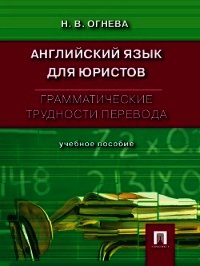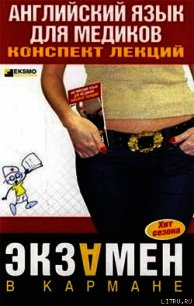Английский язык. Практический курс для решения бизнес-задач - Пусенкова Нина (читать книги .txt) 📗
Веря в то, что все производственные операции сводятся к людям, продукту и прибыли, причем на первом месте стоят люди, Якокка сколотил надежную команду единомышленников. Он понимал, что для успеха компании необходимо построить действительно высококачественную машину, установить на нее конкурентоспособную цену и обеспечить хорошее послепродажное обслуживание – только тогда покупатели устремятся в демонстрационные залы.
Ли Яккока разработал и претворил в жизнь «Программу качества», донеся до всех сотрудников, что качество автомобилей теперь является первоочередным приоритетом «Крайслера» и меры по улучшению качества одновременно способствовали повышению производительности труда. Ли Якокка позаимствовал японскую систему «точно в срок» для сокращения издержек производства и уменьшения запасов.
Он рационализировал структуру концерна, продав подразделение по производству танков, единственное подразделение концерна, которое генерировало прибыль, поскольку считал необходимым сфокусироваться на производстве профильной для «Крайслера» продукции и поскольку компании срочно были нужны наличные для расчетов с поставщиками.
Ли Якокка добился активного участия рекламного агентства «Кенион энд Экхард» в создании новых моделей автомобилей и подписал с ним пятилетний контракт вместо стандартных краткосрочных контрактов, распространенных в автомобильной промышленности. Агентство разработало отличный маркетинговый прием – гарантийный возврат денег за купленный автомобиль после 30 дней пользования, если он по какой-то причине не понравится покупателю.
Важнейшим достижением Ли Якокки можно считать его обращение к правительству США с просьбой выступить гарантом займов компании у банков – это был единственный способ спасти компанию от банкротства. В тот период правительство, деловые круги и население все более отчетливо понимали неэффективность государственного вмешательства в экономику, и большой популярностью пользовался лозунг «Никаких федеральных подачек! (handouts)». Ли Якокке удалось доказать Конгрессу, что банкротство «Крайслера» привело бы к потере десятков тысяч рабочих мест и обошлось бы налогоплательщикам в 16 млрд долл. в виде пособий по безработице, социальных выплат и других расходов и что Америка не стала бы лучше без компании «Крайслер».
В 1982 году «Крайслер» впервые за многие годы заработал прибыль, а в 1983 году досрочно погасил весь банковский заем. Это произошло ровно через пять лет после того, как Ли Якокка был уволен из «Форда».
Источник: по материалам книги Ли Якокки «Карьера менеджера»
Lesson 6
Corporate Strategy
Read and translate the text and learn terms from the Essential Vocabulary.
Carly’s Challenge
The relief at Hewlett-Packard Co.’s headquarters was palpable. On Nov. 16, 2004, just 96 days after its biggest quarterly earnings miss in more than a decade, HP celebrated the company’s 2004 Q4 results. The 66-year-old technology giant had rebounded nicely, reporting a 27% hike in profits, to $1.1 billion, while sales jumped 8%, to $21.4 billion. The market was happy, and HP’s stock rose a solid 8%.
But the next day, cheers gave way to sighs. Certainly the company improved its performance from the disastrous third quarter. But investors were quick to discover the vulnerabilities behind the cheery numbers. HP continued to rely heavily on its superstar printing business while its mammoth PC and server businesses struggled to generate profits. Much of the profit growth stemmed from cuts in R&D, and from a lower tax rate. Without these savings, HP’s profits would have grown only 10% – not 27%.
It has been more than five years since Carleton S. Fiorina hit town with bold plans to reinvent the Silicon Valley icon, and she’s still struggling. The charismatic CEO has zealously pursued a bigger-is-better strategy, with hopes of creating a technology world-beater. Thanks largely to its $19 billion acquisition of Compaq Computer in 2002, HP has doubled its sales in the past five years and become a competitor in an unprecedented number of markets.
Yet in too many of the businesses, HP is losing steam. Sure, its $24 billion printing division generates impressive profits. But the rest of HP is an underachiever. In personal computers, it’s no match for Dell. And HP is too often outgunned by IBM in the global markets for corporate computing. Fiorina’s team faces steep operational challenges as it tries to cope with HP’s huge portfolio of businesses. «It requires entirely different strategies to compete with Dell and IBM,» says analyst Bill Shope of J.P. Morgan. «Judging by HP’s performance, they haven’t been able to do either.»
Analysts estimate the stand-alone value of its printing business as slightly less than the entire company’s $61 billion capitalization. That means that the rest of HP’s businesses, which generate $56 billion in revenues, are being valued at next to nothing.
Still, HP is hardly insolvent. Its 2005 profits are expected to reach $4.5 billion, with sales climbing 6%, to $85 billion. Trouble is, HP has earned a reputation of not meeting expectations. Over the past 20 quarters, HP has missed analysts’ profit estimates seven times. «(HP is) trying to do 100 things. It’s hard to do everything well,» says Joseph Tucci, CEO of EMC Corp., a rival in the storage business.
Louder Drumbeat. Investors aren’t impressed, and Wall Street is insisting on a simple solution: break the company up. The CEO strongly resists the idea. The BoD continues to discuss such a move, but directors support Fiorina’s commitment to hold the company together. Still, the calls to split apart the consumer and corporate businesses, or to sell off the printer division, are bound to grow if she fails to light a fire under HP’s underperformers. The breakup options could certainly appeal to investors. Analyst Steven Milunovich of Merrill Lynch estimates that the total value of HP’s businesses could increase by 25% to 45% if it were split into printing and nonprinting operations. The printing business could expand its market and partner with HP’s computing rivals, including IBM and Dell.
And managers of the computing company, with its divisions in software, PCs, servers, and tech services, would have to struggle to make profits. No longer subsidized by the printer division, they would have no choice but to perform. Merrill assesses that the spin-off would create $15 billion to $27 billion in incremental value.
For now, Fiorina continues to bet on bulk. She contends that HP’s scope pays off in added sales and lower costs. Consumers and corporations, for example, often shop for both printers and computers at the same time. And HP does benefit from economies of scale. After the Compaq merger, the company cut $3.5 billion in annual expenses, in part by squeezing components suppliers for lower prices.
Broad Reach. Fiorina insists that HP needs the broadest possible scale to capitalize on her vision of technology’s future. A former executive at AT&T, Fiorina has become a leading evangelist for the converged digital world. She describes how the Information Revolution will transform corporations and electrify entertainment, with the whole world becoming «digital and mobile and virtual and personal». In line with this vision, she has assembled a giant corporation that is far broader than Dell or IBM. HP makes everything from calculators and cameras to supercomputers, and competes with Sony, Canon, Samsung, EDS, just about everyone in tech.
Fiorina carries the solid Q4 results into an analysts’ day in Boston on Dec. 7. This eases the pressure for her to take dramatic action. But the latest numbers merit a second look. During the period, HP’s tax rate fell to 15%, down from 19% a year earlier. In addition, R&D decreased to 4% of sales, down from 4.6% the year before. This pumped up profits. Investors who are excited about a sustained, profitable growth from HP should be wary. «You can’t simply keep cutting R&D and the tax rate to boost profits,» says analyst Richard Chu of SG Cowen Securities.




